Lanzarote: 15 must-see attractions
Tourist attractions
Places to visit in Lanzarote
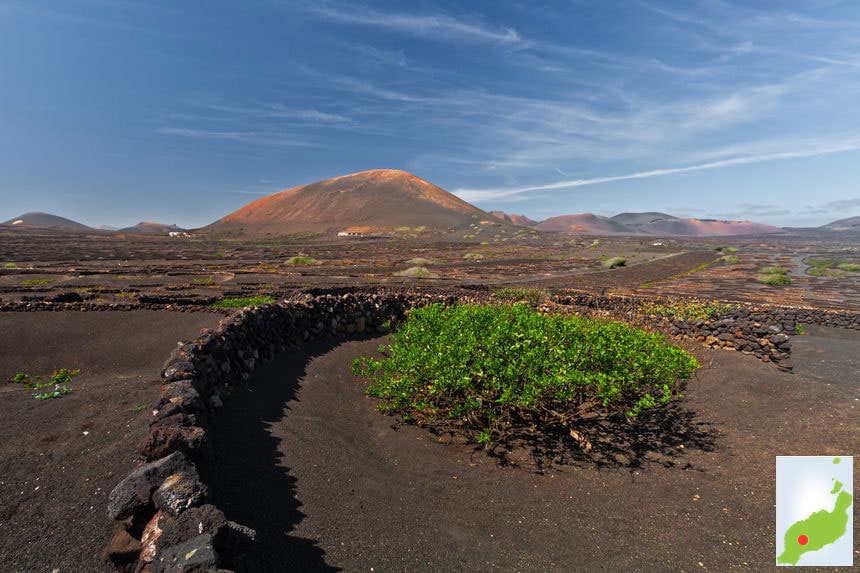
The wine route
You might think this dessert-like volcanic soil might not grow anything at all, but you would be wrong. Among the volcanoes you will see a host of green vines creating a striking contrast with the black soil. Low walls of small rounded stones protect the vines from the violent winds on the island. Along the beautiful road that links Yaiza and Teguise, is La Geria vineyard, the largest in Lanzarote. The beautiful countryside is conducive to photography.
Volcano | Natural wonders | Vineyards
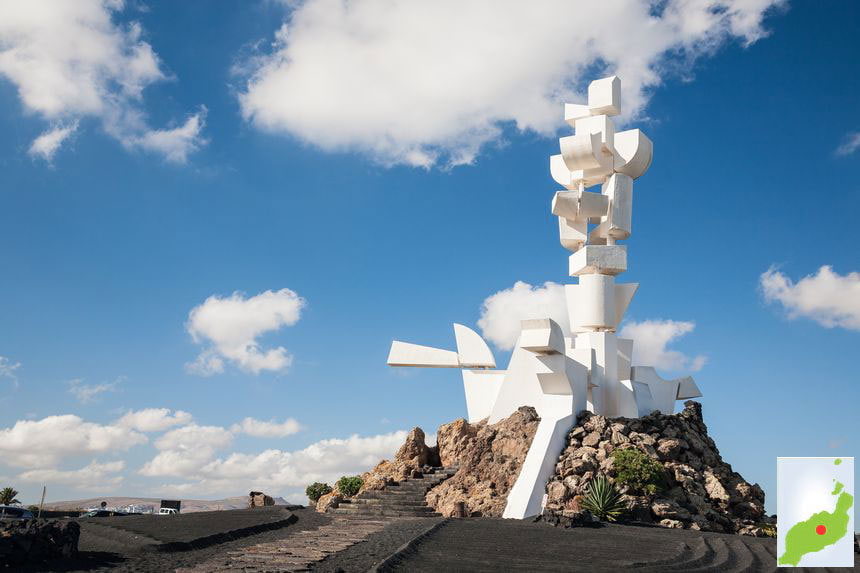
Monumento al Campesino
Built on the geographic centre of the island, this is César Manrique’s monument to the island’s farmers. Fifteen metres high, the structure represents a farmer and his camel, and is constructed from metallic tanks used to transport water. Close to the monument is a museum dedicated to rural life, crafts and local culture as well as a restaurant. Everything here was designed by Manrique.
Monuments | Architecture | Art & Culture
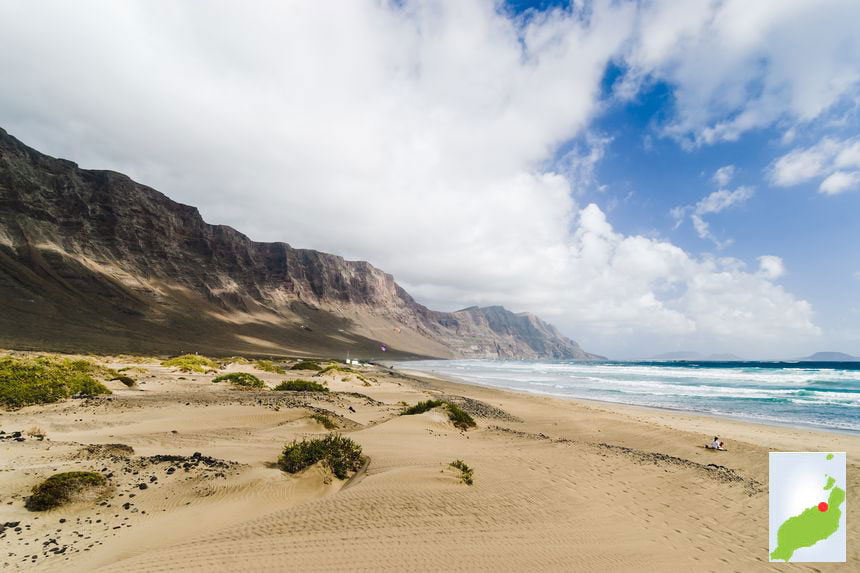
Caleta de Famara
Wonderful scenery greets you as you travel to Caleta de Famara in the north-west of the island. Here the soil has suffered fewer volcanic eruptions and the earth is brown rather than black. In the distance, you can see the Isla de la Graciosa. Caleta de Famara is a small fishing village of sand covered roads. What makes its name is the immense beach and dunes swept by the frequent winds that attract surfers from all over the world. Here the flags may be red but you’ll still see people in the water… clinging to their surfboards. The atmosphere is relaxed and the setting is enchanting.
Nice village | Sea | Beaches | Surfing | Volcano
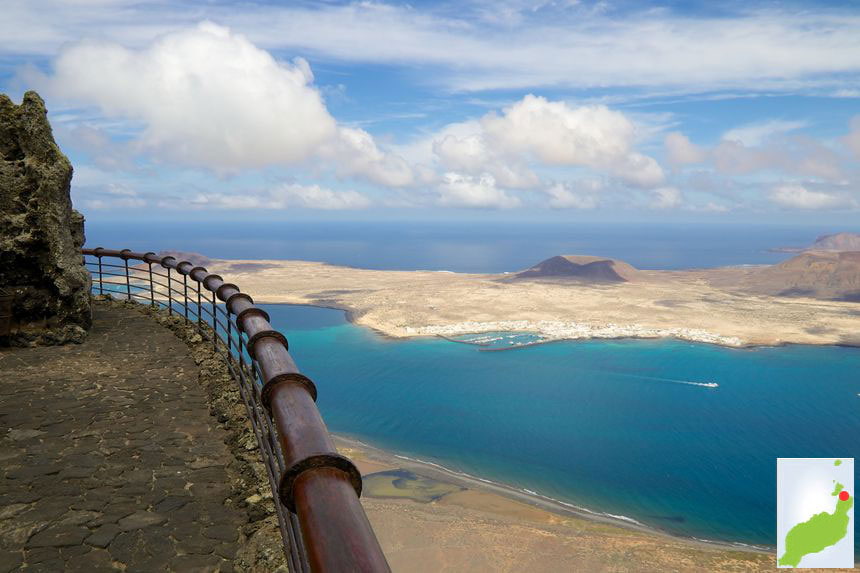
Mirador del Rio
At the very north of the island, in Risco de Famar, the Mirador del Rio offers an extraordinary view of Isla de la Graciosa and the Corona volcano (640 metres). The site, conceived by César Manrique, is completely integrated into the natural environment and allows you to discover some of the finest views over the island. You enter the site via a brilliant white corridor scattered with plants and niches where beautiful ceramics are displayed. At the end of the corridor, you come to a room filled with the light of huge windows and with spectacular views of Isla de la Graciosa. Look up to admire the iron sculptures hanging from the ceiling. Close to the chimney are the stairs which lead to the souvenir shop and then the panoramic terrace at the summit (475 metres).
Viewpoint | Island | Sea | Architecture | Volcano
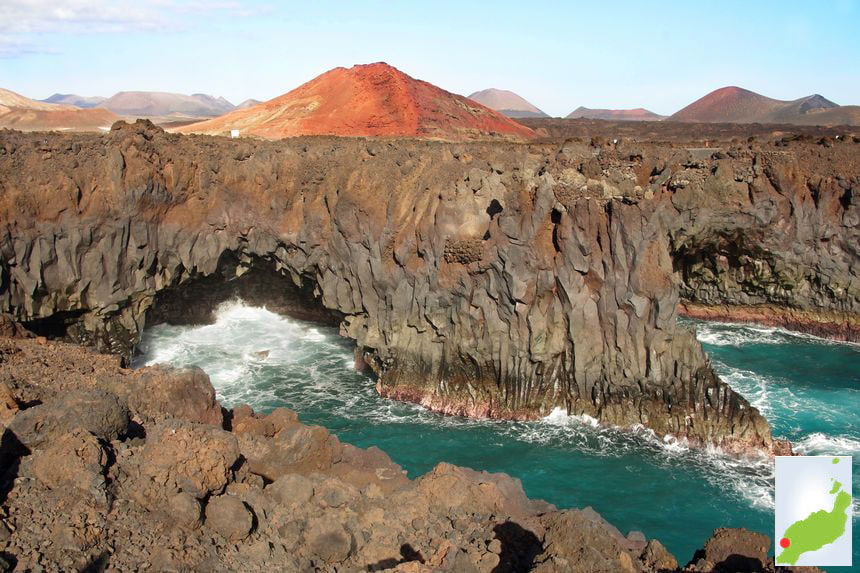
Los Hervideros
Not far from Golfo is Los Hervideros where the ocean engulfs immense volcanic caves. It’s a magnificent spectacle with small volcanoes in tones of red as a backdrop. Easy to get to, with a large car park, narrow paths lead you to this exceptional place. A stairway gives access to a small balcony allowing you to get a little closer to the spectacle. Not to be missed.
Sea | Hiking | Nature wonders
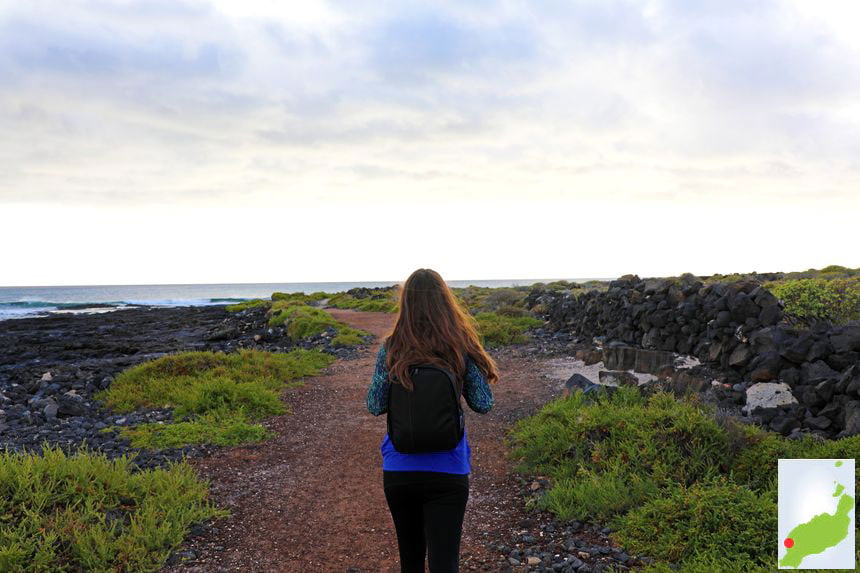
Le sentier du littoral
At the end of Golfo village, close to the children’s play area, is the start of the coastal path which leads walkers eight miles to the Madera Beach (near Ténesar). Its a superb walk between the blue sea crashing against the rocks on one side and the volcanic boulders on the other. It is a long walk for some (16 miles there and back). For the less determined, we suggest walking to the lovely Playa del Paso (1.5 miles there) to give you a glimpse of the extraordinary countryside. Once you can see the beach, it takes another few minutes to arrive there. La Playa del Paso is a splendid black sand beach and a cliff lost to the volcanic rocks where you can sit for hours watching the waves crash onto the shore. Be warned, the currents are strong and swimming is forbidden.
Volcano | Hiking | Viewpoint
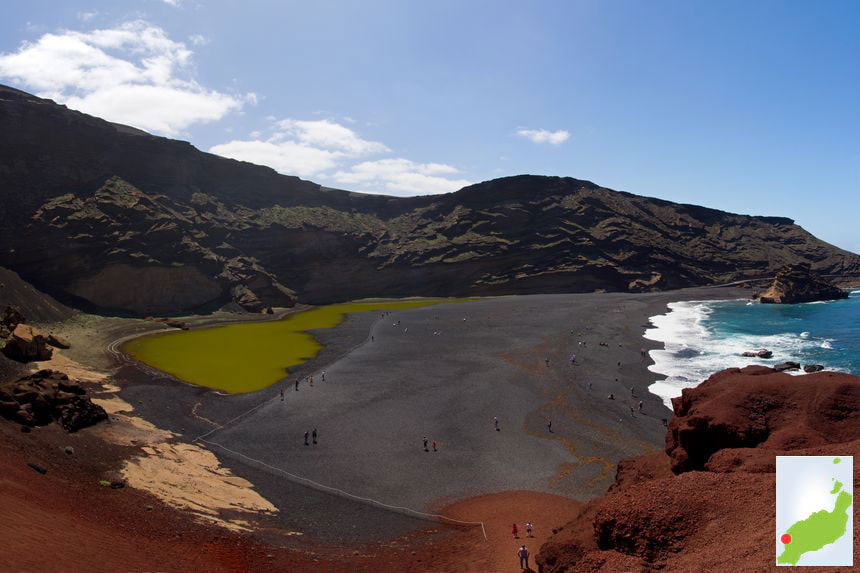
La Laguna Verde
Set in the small fishing village of Golfo, surrounded by lava and volcanic rocks, the Laguna Verde is an extraordinary natural place of interest. A short accessible path to the left of the entrance to the village leads you to this natural curiosity. This breathtaking little lake (150 metres long) is green thanks to the presence of sulphur and Ruppia maritima, an algae. Another feature of the lagoon is its salinity - it is more dense than the Red Sea. The contrast between the blue see, black rocks and green lagoon will leave you speechless. La Laguna Verde is one of the most exceptional sites Lanzerote has to offer and shouldn’t be missed.
Beaches | Natural wonders | Sea | Hiking | Volcano
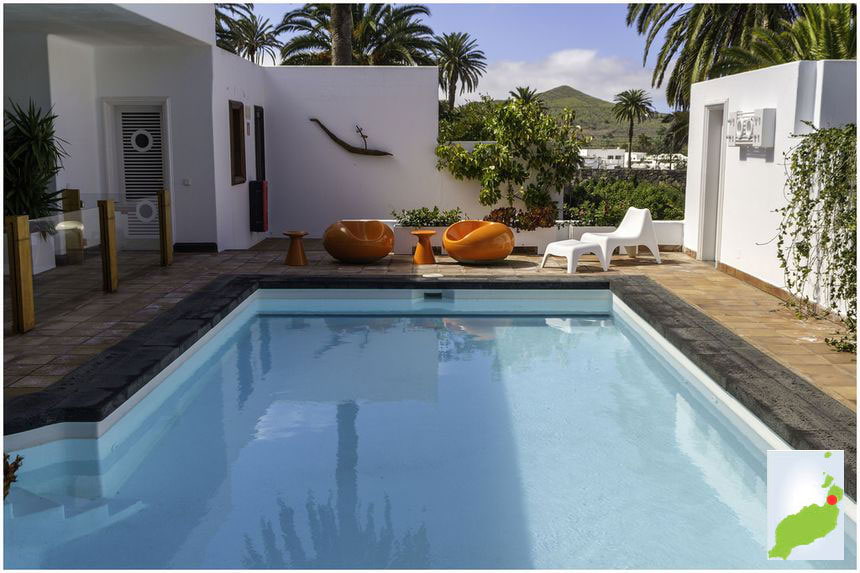
Casa-Museo César Manrique
The last home of the artist César Manrique is located in Haria in the north-west of the island. A beautiful traditional house amid a small palmery, at the bottom of which is his studio. Entering the house through a small courtyard paved with volcanic tiles, you quickly discover the artist’s personal world. His bedroom with his personal effects, his pyjamas lying on the bed and the outdoor bathroom concealed by a veranda. You expect him to reappear at some point. The rest of the house displays more of his belongings. The outside space with its swimming pool and garden lounge invite relaxation. And at the bottom of the garden, the studio has been restored as if the artist had just left - unfinished canvasses, paint and drawings covering the tables.
Museums | Architecture | Art & Culture
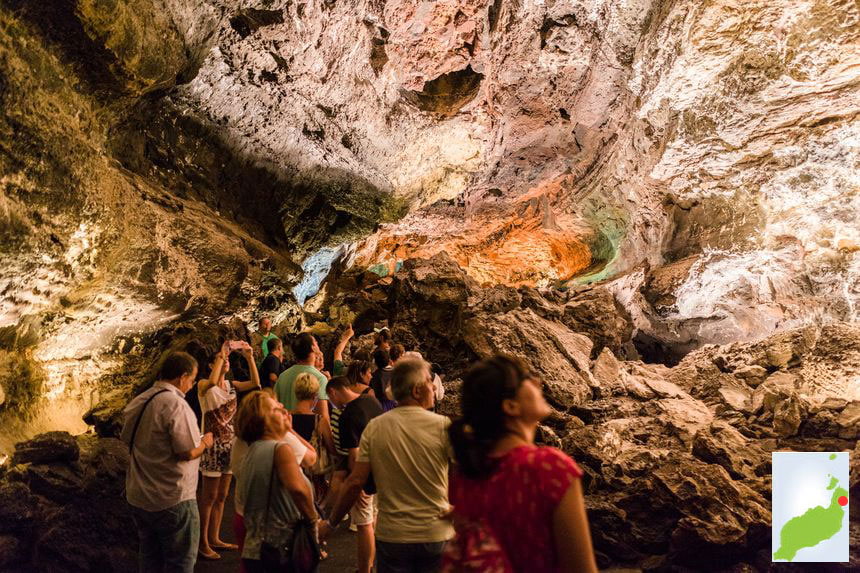
Cuevas de los Verdes
This vast lava tunnel linking the Corona volcano to the sea, over three miles away, was created by several different volcanic eruptions. A marked path allows visitors to discover this extraordinary natural phenomenon with relative ease. The galleries are stacked above each other on several levels, to a height of 50 metres in places, and reveal a multitude of colours from black, brown and ochre to the oxidised red of the iron deposits in the basalt. There’s no need to dress warmly as the temperature remains mild at around 66°F. Its a spectacular journey through the bowels of the earth. The only drawback is guided visits (Spanish / English) only take place in groups of fifty. Groups are formed as visitors arrive, meaning a waiting time of up to 20 minutes can be expected.
Natural wonders | Caves
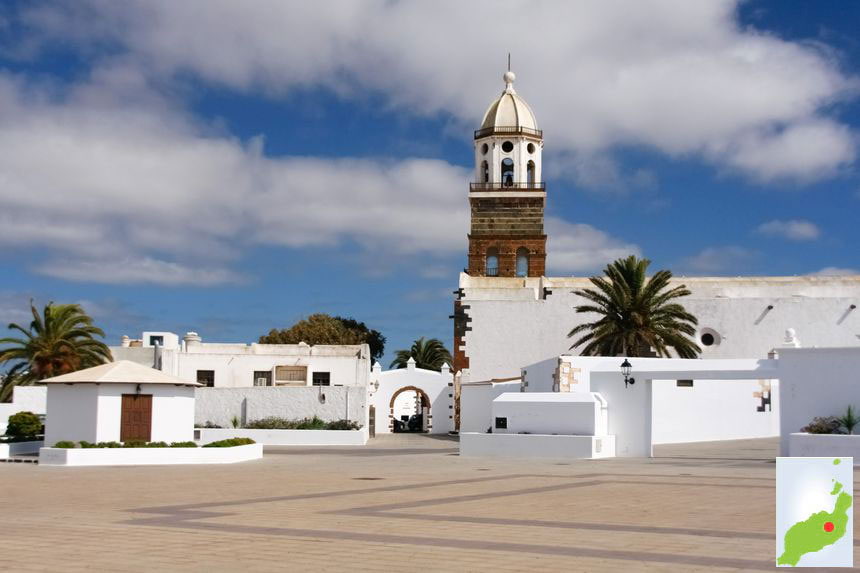
Teguise
This very attractive, authentic market town with its immaculate white-walled houses was formerly the capital of the island. Teguise is full of opulent historic monuments you can discover as you stroll through its pedestrianised back streets. From Plaza de la Constitution, the heart of the town, you can admire the church of Nesta Señora de Guadeloupe, the Spinola Palace and La Cilla.
Nice village | Architecture | Art & Culture | Hiking | Monument
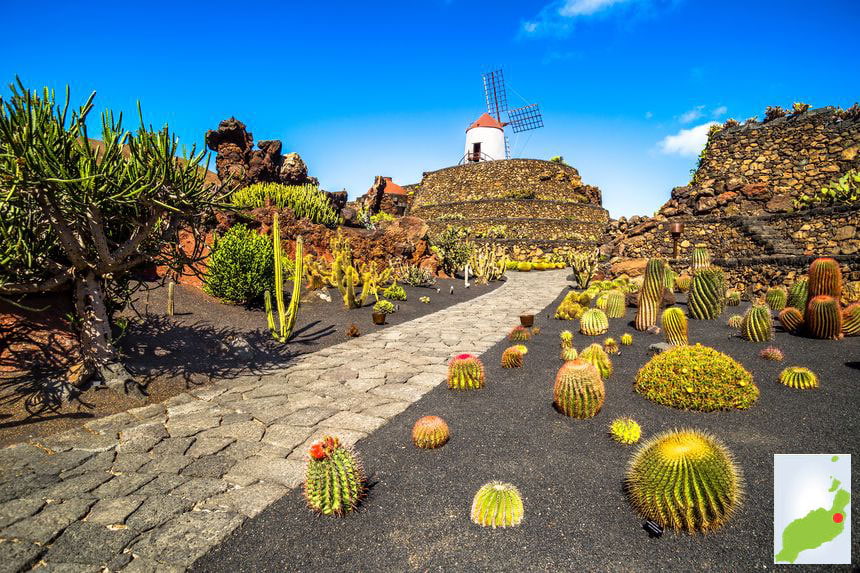
Cactus Garden
Another of artist César Manrique’s superb creations which is definitely worth a visit. From the car park, you would never imagine this immense circular garden, dominated by a windmill, would be found in this former quarry. Everything is beautifully integrated with the surrounding countryside. As soon as you enter, you are enthralled by the setting of black soil and volcanic rocks contrasting with the green of the cacti. And there are thousands of cacti of all shapes and sizes from around the world, from Madagascar to Peru, by way of Mexico and Kenya. Spectacular! To discover them, take the numerous stone avenues and stairs which run through the garden. A restful fountain with goldfish and stone benches awaits you in the centre of the garden.
Park & garden | Architecture
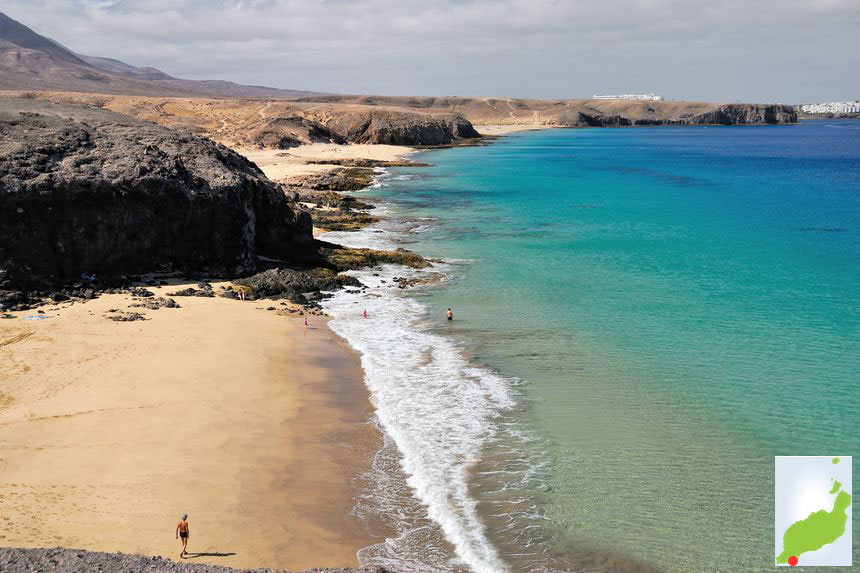
Punta de Papagayo
The dirt track seems endless but it leads to Papagayo Beach, one of the most beautiful on the island. The preserved natural environment of bays of golden sand and still waters look out over the islands of Fuerteventura and Lobos. A five mile walk starting from the last hotel on the tourist side of Playa Blanco is ideal for discovering Papagayo’s wonderful views and idyllic beaches. It is a relatively easy circular walk which is suitable for children.
Beaches | VIewpoint | Sea | Hiking
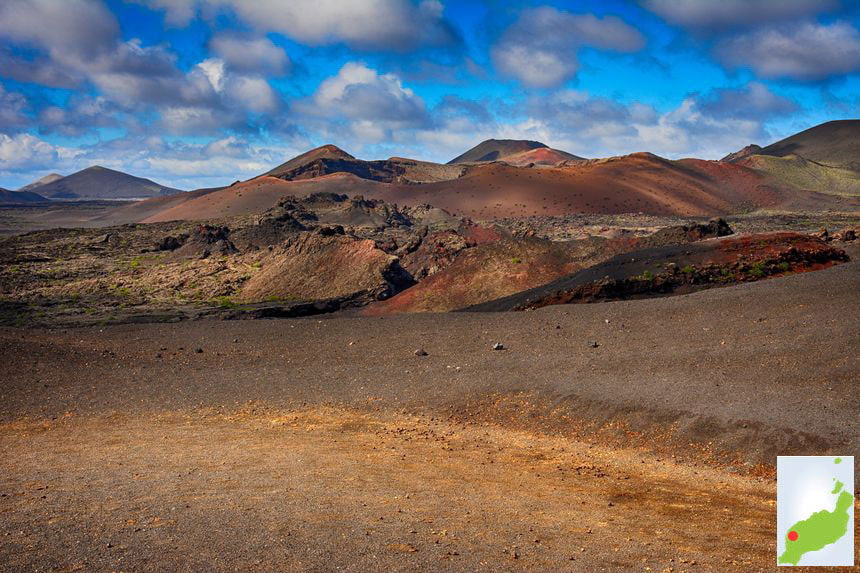
Parque Nacional de Timanfaya
If you could keep only one memory of Lanzarote, it would have to be Timanfaya National Park. The grandiose volcanic landscape is enchanting. The park resulted from volcanic eruptions between 1730 and 1736 and again in 1824, the lava flows extend for several miles. The scenery changes depending on the date and the material emitted by the eruptions. Here you will see craters and mounds in extraordinary shades of black, brown, ochre, yellow and red, but nothing green - plants do not grow on this volcanic soil. You have no other choice to visit the park than by bus. Access to the park costs 9 euros for a guided tour. It’s not ideal to be among the crowds, but it is the only way to visit this amazing landscape. The bus journey takes about 45 minutes along craggy roads with a commentary in English, Spanish and German. There are occasional stops to for taking photographs from the bus. Walking through the heart of the park is forbidden, but you can stretch your legs on a number of walking circuits around the outskirts. Head towards the beach at Madera, near the village of Tenésar (towards Tinajo) where a trail takes you along the coastal path. To get to the beach, take the road through the middle Timanfaya - don’t expect to see another soul along the road. When you get there, other than a handful of fishermen, you will be alone on this black sand beach. The coastal path which skirts Timanfaya takes you to El Forto for an 8 mile walk along a lava flow with the blue of the sea to one side and black lava formations on the other. You could almost be alone, in the middle of nowhere on another planet.
Volcano | Natural wonders | Park | Hiking
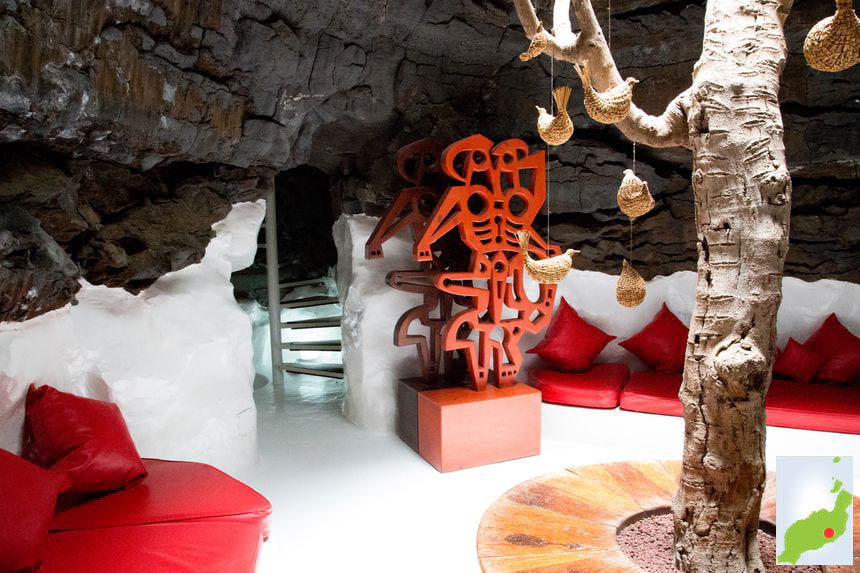
Fundacion César Manrique
Designed by César Manrique and a group of friends, the aim of the foundation (near Arrecife) is to encourage participation in cultural, artistic and environmental activities. The foundation was established in Manrique’s own spectacular house. Built on one of the island’s most beautiful lava flows, the Foundation includes the 1,800 m² house, 1200 m² of terraces and gardens and 5 natural volcanic formations. From an architectural point of view, the house is a wonder and the contrast of its white walls against the black lava is striking. A mixture of traditional and modern architecture, with large windows, open rooms and abundant vegetation, the house is a haven of peace. As well as Manrique’s paintings, sculptures and ceramics, works by others (local artists and Tapies) are displayed. A fascinating visit is guaranteed. Le conseil de Lucie : Designed by César Manrique and a group of friends, the aim of the foundation (near Arrecife) is to encourage participation in cultural, artistic and environmental activities. The foundation was established in Manrique’s own spectacular house. Built on one of the island’s most beautiful lava flows, the Foundation includes the 1,800 m² house, 1200 m² of terraces and gardens and 5 natural volcanic formations. From an architectural point of view, the house is a wonder and the contrast of its white walls against the black lava is striking. A mixture of traditional and modern architecture, with large windows, open rooms and abundant vegetation, the house is a haven of peace. As well as Manrique’s paintings, sculptures and ceramics, works by others (local artists and Tapies) are displayed. A fascinating visit is guaranteed.
Museums | Architecture | Art & Culture
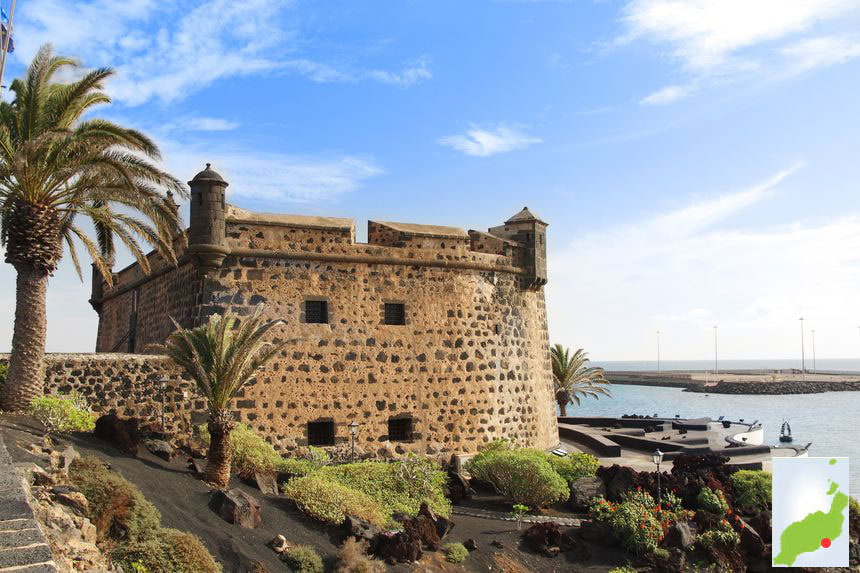
Museo Internacional de Arte Contemporaneo (MIAC)
The International Museum of Contemporary Art can be found in the San José Castle, a former military fortress. It aims to promote and display important works of modern art. The superb vaulted rooms were renovated by César Manrique. The museum hosts a permanent exhibition of artists such as Tapies, Manrique, Pancho Lasso and other Spanish and local artists. A stairway leads to the temporary exhibition, passing the restaurant with its magnificent views of the port.
Museums | Architecture | Art & Culture
You may also like
-
Flights to the Canary Islands
All you need to know before buying your plane ticket
-
Tourist maps
Region, attractions and distance map the Canary Islands!
-
Hotel or vacation rental?
Find your dream accommodation in the Canary Islands at the best price...
-
When to go?
Be sure to visit the Canary Islands at the best time of year!
and why not...
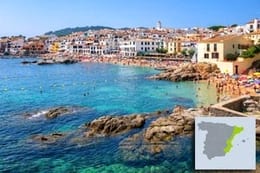 the Spanish Coasts
the Spanish Coasts




